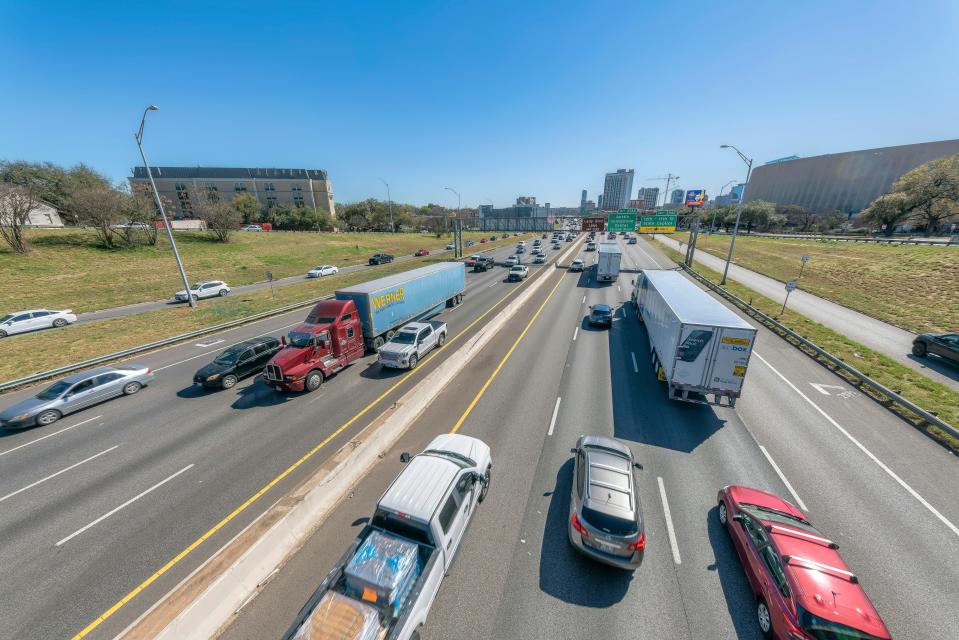Driving to see the solar eclipse? These Texas roads may see the most traffic
State transportation officials are expecting heavy traffic Monday and the days leading up to the total solar eclipse.
Thousands of drivers could traverse state roads, as a large swath of Texas resides inside the eclipse's path of totality. In a news release, the Texas Department of Transportation said crews are preparing equipment and traffic signs, and will be available all day Monday. The Highway Emergency Response Operator program will also be available to help motorists.
Construction and maintenance work on major roads in the path of the eclipse will also be paused from Sunday to Tuesday. Here's how the 2024 solar eclipse will impact roads.
Texas roads impacted by solar eclipse traffic
Major corridors throughout the state could be impacted by eclipse traffic, as well as local farm-to-market and ranch-to-market roads within the eclipse's path of totality, department spokesperson Brad Wheelis told the Austin American-Statesman via email.

Here are some of the Texas roadways that could be impacted.
Eagle Pass and Uvalde:
U.S. 57, U.S. 90, U.S. 277. and U.S. 377.
San Antonio, Austin, New Braunfels, Round Rock, Georgetown, Cedar Park, Leander, Burnet, Kerrville and Fredericksburg:
Interstate 10, Interstate 35 and Interstate 37.
U.S. 77, U.S. 79, U.S. 87, U.S. 183, U.S. 190, U.S. 281 and U.S. 290.
Dallas, Fort Worth, Waco, Copperas Cove, Killeen, Irving, Waxahachie and Plano:
Interstate 20, Interstate 35 and Interstate 45.
U.S. 67, U.S. 77, U.S. 80, U.S. 84, U.S. 175, U.S. 190, U.S. 287, U.S. 377 and U.S. 380.
Tyler, Longview and Paris:
Interstate 30.
U.S. 57, U.S. 69, U.S. 82, U.S. 259 and U.S. 277.
Safety tips for driving during the eclipse
Here are some safe driving tips, shared by the Department of Transportation:
Expect heavy traffic in the days before and during the solar eclipse.
Plan to leave early and stay late. Use DriveTexas.org to see live traffic conditions.
Do not park in the middle of roads or on road shoulders. Find a safe place to park to view the eclipse.
Keep your headlights on, even in daylight.
Do not wear eclipse viewing glasses while driving.
What time is the eclipse in Texas?
Here's when totality will be visible in the following Texas cities, according to the department:
Eagle Pass: 1:27 p.m.
Uvalde: 1:29 p.m.
San Antonio: 1:33 p.m.
Austin: 1:36 p.m.
Waco: 1:38 p.m.
Dallas and Fort Worth: 1:40 p.m.
Tyler: 1:43 p.m.
Texarkana: 1:46 p.m.
What is a solar eclipse?
According to NASA, a solar eclipse occurs when the moon passes between the sun and Earth, either fully or partially blocking the sun's light. This casts a momentary shadow on Earth.
A total solar eclipse, which will happen April 8, is when the moon completely blocks out the sun. These do not happen very often, and can only be experienced by people located in the center of the moon's shadow.
Solar eclipse map: Path of totality in Texas
This article originally appeared on Cincinnati Enquirer: Driving to see the eclipse? These Texas roads may see heavy traffic

